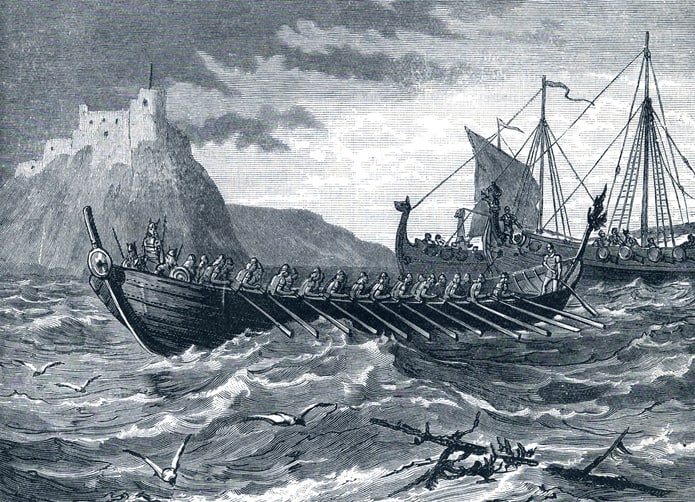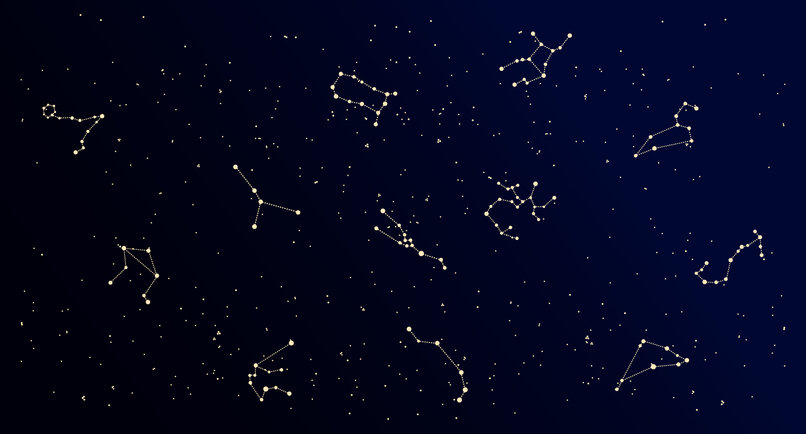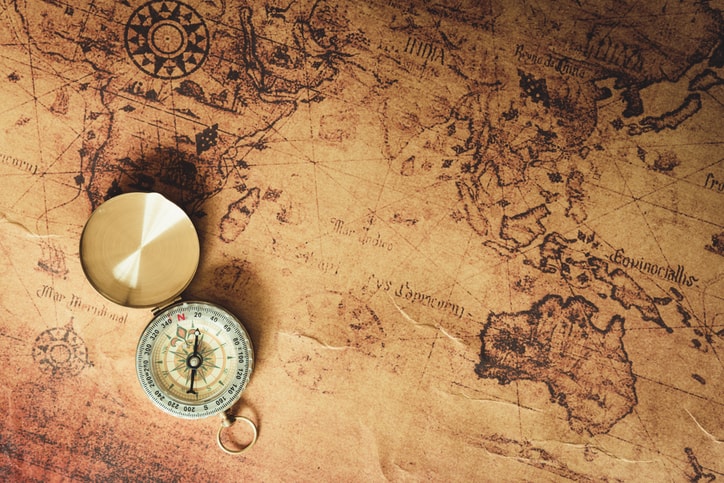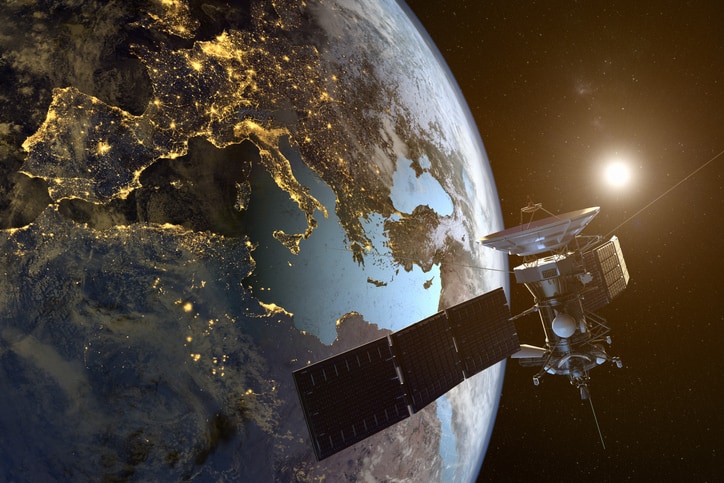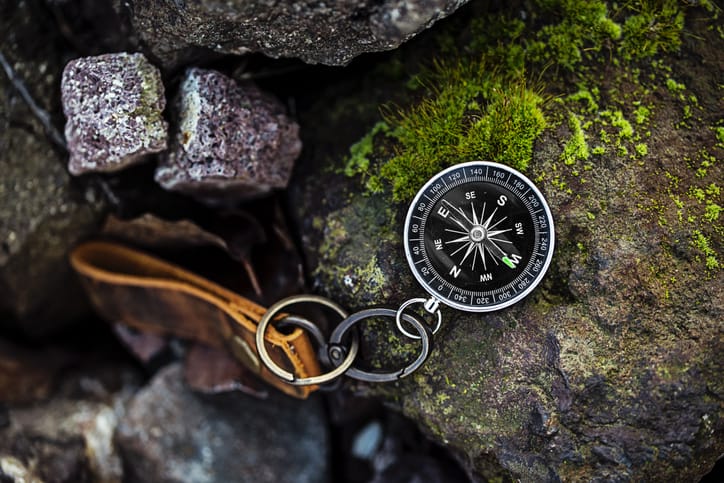Navigating by the Stars: The Art and Science of Celestial Navigation
Discover the science and historical significance of celestial navigation, tools, and techniques, and learn about its revival in modern times as a valuable skill for mariners, aviators, survivalists, and outdoor enthusiasts.
Introduction to Celestial Navigation
Celestial navigation, a captivating blend of science and art, is a testament to humanity’s enduring quest to navigate the vast expanses of the Earth using the celestial bodies above. For centuries, mariners and explorers have looked to the sun, stars, and moon as their guiding lights, relying on the timeless principles of celestial navigation to chart courses across oceans and discover new lands.
The intricate dance of the heavenly spheres has long fascinated adventurers and scholars alike, offering a window into the marvels of the universe and the interconnectedness of Earth and sky. Celestial navigation involves using celestial bodies, a technique historically used by sailors and aviators before modern navigation systems like GPS.
The allure of celestial navigation lies not only in its practical applications but also in its deep-rooted history and significance in shaping the course of human exploration. Consider the expeditions of early navigators like Ferdinand Magellan, whose circumnavigation of the globe was made possible by astute celestial calculations and precise observations of the stars.
By understanding the fundamental principles of celestial navigation, individuals gain a practical skill for orientation and a profound appreciation for the wonders of the cosmos and the timeless art of finding one’s way by the light of the stars.
Celestial navigation bridges the terrestrial and celestial realms, offering a unique perspective on our place in the universe and the interconnectedness of all things. As we delve deeper into the scientific principles and historical significance of celestial navigation, we uncover a rich tapestry of knowledge that connects us to the traditions of the past and guides us toward a future where the ancient art of celestial navigation continues to inspire and enlighten generations to come.
The Scientific Principles Behind Celestial Navigation
At the core of celestial navigation are the scientific principles that govern the movements of the Earth and the celestial bodies above, creating a harmonious symphony of motion that guides navigators on their journeys. By observing the apparent paths of stars, the sun, and the moon across the sky, navigators can decipher their position on Earth’s surface with remarkable precision, tapping into the predictable patterns woven into the fabric of the cosmos. This intricate dance of celestial bodies offers a roadmap for explorers, mariners, and adventurers seeking to traverse the seas and navigate uncharted territories confidently and accurately.
For example, the concept of declination plays a pivotal role in celestial navigation, providing navigators with a celestial coordinate that denotes the angular distance of a celestial body north or south of the celestial equator. This fundamental element allows navigators to establish reference points in the sky, aiding them in pinpointing their exact location on the globe with precision and accuracy.
The mastery of declination and other astronomical principles underscores the meticulous nature of celestial navigation, highlighting the intricate calculations and measurements required to navigate the Earth’s vast oceans using the stars as guides. Furthermore, celestial navigation is a testament to the enduring legacy of scientific inquiry and exploration, where the principles of astronomy and mathematics converge to illuminate the path for those daring to venture into the unknown.
By unraveling the scientific principles behind celestial navigation, we gain a deeper understanding of the universe’s mechanics and connect to the ancient mariners and astronomers who looked to the stars for guidance and inspiration in their quests for discovery and knowledge.
Historical Significance and Evolution of Celestial Navigation
The historical significance of celestial navigation is deeply intertwined with the epic tales of exploration and discovery that have shaped the course of human history. Throughout the Age of Exploration, celestial navigation was pivotal in enabling mariners to traverse the world’s oceans, discover new lands, and establish trade routes that connected distant civilizations.
Consider the expeditions of renowned navigators like Captain James Cook, whose mastery of celestial navigation allowed him to chart unexplored waters, navigate treacherous seas, and expand the boundaries of geographical knowledge. These historical figures stand as testaments to the enduring importance of celestial navigation in the annals of exploration and adventure.
The evolution of celestial navigation over the centuries has been marked by significant advancements in technology and instrumentation that have enhanced the accuracy and reliability of this ancient navigational art. For instance, the development of precise timekeeping devices such as chronometers revolutionized celestial navigation in the 18th century, enabling sailors to calculate longitude with unprecedented accuracy based on celestial observations. These innovations improved the safety and efficiency of maritime travel and laid the foundation for future explorations and discoveries that would shape the course of human civilization.
Moreover, the historical significance of celestial navigation extends beyond its practical applications to encompass a profound cultural and intellectual legacy that continues to inspire and captivate modern-day navigators and explorers. By delving into the rich tapestry of historical accounts and achievements associated with celestial navigation, we gain a deeper appreciation for the resilience, ingenuity, and adventurous spirit of those who dared to navigate the world’s oceans using the stars as their guides.
Tools Used in Celestial Navigation
In the intricate practice of celestial navigation, many tools and instruments have been employed over the centuries to aid navigators in determining their position on Earth’s surface using the celestial bodies above. Among the primary tools utilized in celestial navigation is the sextant, a precision instrument that allows navigators to measure the angle between celestial bodies and the horizon with remarkable accuracy, essential for calculating their position at sea. By aligning the sextant with a specific star or the sun, mariners can capture the elevation and azimuth angle, enabling them to plot their course confidently and precisely.
Additionally, throughout history, mariners and explorers have relied on a diverse array of instruments, such as nocturnals and astrolabes, to navigate the open seas using the guidance of the stars. Nocturnals, for instance, were instrumental in determining time at night by observing the positions of specific stars in the sky, allowing sailors to track the passage of time during their nocturnal voyages.
On the other hand, astrolabes served as indispensable tools for measuring the altitude of celestial bodies, providing essential data for calculating the observer’s position accurately and effectively. These innovative instruments represent the ingenuity and craftsmanship of ancient navigators who honed their skills in celestial navigation using the tools at their disposal.
Furthermore, the Air Almanac stands out as a comprehensive compendium of data on the positions of celestial bodies, offering essential information for celestial navigators seeking to make precise calculations for navigation. This invaluable resource provides navigators with up-to-date celestial body positions, enabling them to conduct meticulous calculations and adjustments necessary for accurate celestial navigation. Utilizing these tools underscores the meticulous nature of celestial navigation, where the synergy of precision instruments and astronomical data guides navigators on their journeys across the open seas.
Celestial Bodies and Their Fundamental Role in Navigation
Celestial bodies, including stars, the sun, and the moon, play a fundamental role in celestial navigation. They serve as steadfast reference points that guide mariners and explorers on their voyages across the seas. These celestial luminaries have long been relied upon for orientation, timekeeping, and positioning, offering navigators a celestial compass to navigate the Earth’s vast oceans confidently and accurately. Consider the North Star, Polaris, a beacon of light in the night sky that has guided countless sailors in the Northern Hemisphere due to its fixed position aligned with the Earth’s axis, providing a reliable reference point for determining direction and latitude.
Moreover, the sun’s daily path across the sky and its predictable movements offer crucial cues for daytime navigation and timekeeping, enabling navigators to determine cardinal directions and gauge the time of day accurately. By observing the sun’s zenith and tracking its course throughout the day, mariners can establish their position and maintain a sense of temporal order, a skill honed through centuries of celestial navigation practice.
With their unwavering presence and predictable behaviors, these celestial bodies form the celestial tapestry that has guided sailors and adventurers through the ages, underscoring the enduring significance of celestial navigation in understanding and traversing the world’s oceans.
Furthermore, different constellations and stars serve as celestial signposts in the night sky, offering navigators a celestial roadmap to chart their course and precisely determine their position. By identifying specific stars and their relative positions, mariners can triangulate their location on Earth’s surface, creating a celestial grid that guides them on their journeys across the open seas. The intricate dance of celestial bodies above provides a timeless and reliable method of finding one’s way in a world where the stars offer a celestial compass that transcends the boundaries of time and space.
Calculating Position Using Celestial Navigation
Navigators determine their position through celestial navigation by employing a series of precise measurements and calculations based on the observed positions of celestial bodies in the sky. By taking multiple sightings of stars, the sun, and the moon, navigators can establish intersecting lines of position that pinpoint their location on Earth’s surface with remarkable accuracy, creating a celestial fix that guides them on their journeys across the seas. For example, sailors in the Age of Exploration would capture the altitude of celestial bodies like the North Star and Polaris to determine their latitude during nocturnal voyages, using the stars as their celestial guides.
To enhance the accuracy of their celestial calculations, navigators utilize sight reduction tables to correct measurements for factors such as refraction and atmospheric conditions, ensuring that their observations align with the actual positions of celestial bodies. These tables are essential tools for celestial navigators, allowing them to make precise adjustments and calculations necessary for accurate celestial navigation. For instance, historical figures like Eleanor Creesy meticulously used sight reduction tables to refine their celestial navigation calculations during long sea journeys, showcasing the importance of attention to detail in celestial navigation.
Moreover, advanced celestial navigators possess the skill to determine both latitude and longitude through celestial observations and mathematical calculations, unlocking the potential to plot their position on Earth’s surface with precision. By combining the altitude and azimuth measurements of different celestial bodies, navigators can establish their position accurately, creating a celestial fix that guides them on their journeys across the open seas.
For example, during Shackleton’s Endurance expedition, his ability to calculate latitude and estimate longitude using celestial navigation was crucial for navigating the treacherous Antarctic waters, underscoring the importance of celestial navigation skills in challenging environments. Mastering these techniques highlights the complexity and precision involved in celestial navigation, showcasing its enduring relevance in maritime and aviation practices.
Challenges and Solutions in Celestial Navigation
Navigating by the stars presents unique challenges, particularly when faced with inclement weather conditions, such as cloud cover that obstructs celestial bodies from view. Experienced navigators must rely on alternative methods or wait for clear skies to resume their celestial observations in such situations. For example, early mariners often employed dead reckoning or visual references like landmarks to approximate their position when adverse weather hindered celestial observations, demonstrating the adaptability and resourcefulness required for successful celestial navigation.
Moreover, the technique of noon sight emerges as a practical solution for overcoming weather-related obstacles in celestial navigation, offering navigators a reliable method for determining their latitude at sea. By observing the sun when it reaches its highest point in the sky, navigators can calculate their latitude based on its zenith position, providing a celestial fix that guides them on their journeys with confidence and accuracy. This method is a valuable tool for celestial navigators facing challenges due to cloudy skies or poor visibility, enabling them to maintain their course and navigate the open seas effectively.
Additionally, the concept of the circle of equal altitude serves as a clever strategy for celestial navigators seeking to overcome weather-related challenges and ensure accurate position plotting. By taking simultaneous altitude measurements of multiple celestial bodies appearing at the same height above the horizon, navigators can create intersecting circles on the Earth’s surface that pinpoint the location where these circles intersect.
This technique enhances precision in determining position, compensating for the limitations of adverse weather conditions and ensuring a more accurate fix on the observer’s whereabouts at sea. By understanding and applying these innovative solutions, celestial navigators can navigate with confidence and resilience, even in the face of challenging environmental conditions.
The Revival of Celestial Navigation in Modern Times
In an era dominated by technological advancements, the resurgence of celestial navigation has captured the imagination of mariners, aviators, and survivalists seeking to embrace the timeless art of navigating by the stars. Despite the prevalence of modern navigation systems like GPS, celestial navigation remains a valuable skill for individuals and organizations looking to enhance their navigational capabilities and reduce reliance on electronic systems. For instance, in the event of a GPS malfunction or failure, the ability to navigate using the sun, stars, and moon becomes a critical backup for ensuring safe and accurate travel, underscoring the enduring importance of celestial navigation in modern times.
Furthermore, the resurgence of celestial navigation extends to military training, where personnel undergo rigorous instruction in this ancient practice to enhance their operational readiness and mitigate risks associated with GPS dependency. By mastering the art of celestial navigation, military units can maintain their navigational capabilities in challenging environments and situations where electronic systems may be compromised, showcasing a strategic preparedness mindset that values self-sufficiency and adaptability in the face of technological uncertainties.
This shift towards embracing traditional navigation methods highlights the practicality and importance of celestial navigation in a technology-driven world, where the stars continue to guide and inspire navigators of all backgrounds and disciplines.
Moreover, the revival of celestial navigation serves as a testament to the enduring relevance and significance of traditional navigation methods in the face of evolving technologies and challenges. By rediscovering the art of navigating by the stars, individuals and organizations can cultivate a deeper connection to the natural world and its celestial wonders, fostering a sense of self-reliance, empowerment, and resilience in navigating the complexities of the modern world.
The resurgence of interest in celestial navigation highlights the enduring importance of this ancient practice in a technology-dependent society, where the stars above continue to offer guidance and inspiration to those who dare to look up and navigate by their light.
Importance of Learning Celestial Navigation for Survival
Mastering celestial navigation is a skill and a gateway to self-reliance, empowerment, and preparedness in facing unforeseen challenges and emergencies. For survivalists and outdoor enthusiasts, navigating using the stars offers a lifeline in remote or emergencies where modern technology may be unavailable. Imagine finding yourself in a wilderness with a broken GPS or a dead phone battery; in such scenarios, knowing celestial navigation could be the key to finding your way back to safety, underscoring the critical importance of mastering this ancient art.
Individuals enhance their self-reliance and preparedness by honing celestial navigation skills, equipping themselves with essential survival tools for navigating unfamiliar terrain and challenging environments. For example, the ability to determine one’s position using natural cues and celestial bodies instills a sense of confidence and empowerment, enabling individuals to navigate with precision and accuracy in the absence of modern technology. This practical knowledge fosters a deeper connection to the natural world. It cultivates a profound appreciation for the timeless art of celestial navigation and its enduring relevance in the modern era.
Furthermore, celestial navigation skills provide survivalists and outdoor enthusiasts with a valuable toolset for navigating the complexities of the natural world and finding their way with confidence and resilience. By mastering the principles of celestial navigation, individuals embark on a journey of self-discovery and exploration, unlocking the secrets of the stars and the Earth’s natural wonders that have guided navigators for centuries. The ability to navigate using celestial cues empowers individuals to embrace the challenges of the wilderness and navigate with confidence, preparedness, and a deep connection to the timeless art of celestial navigation.
Conclusion: Embracing the Timeless Art of Celestial Navigation
Celestial navigation is more than a navigational technique; it is a profound connection to the natural world and the celestial wonders that have guided humanity’s journeys across the seas for centuries. By delving into the principles and practices of celestial navigation, individuals not only unlock the secrets of the stars but also cultivate a deep appreciation for the art of finding one’s way by the light of the celestial bodies above. From the ancient mariners who navigated the open seas using the stars as their guides to the modern-day adventurers embracing the art of celestial navigation, the timeless allure of navigating by the stars continues to captivate and inspire generations of explorers and enthusiasts.
The revival of celestial navigation in modern times is a testament to this ancient art’s enduring relevance and importance in a world driven by technology and innovation. By rediscovering the art of navigating by the stars, individuals and organizations can embrace a sense of self-reliance, empowerment, and resilience in the face of uncertainty and challenge.


